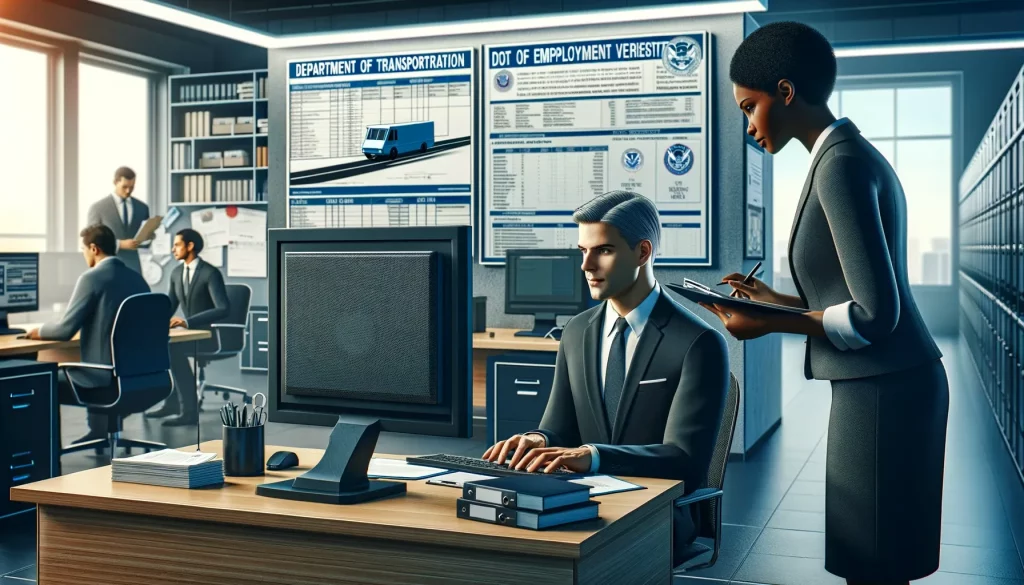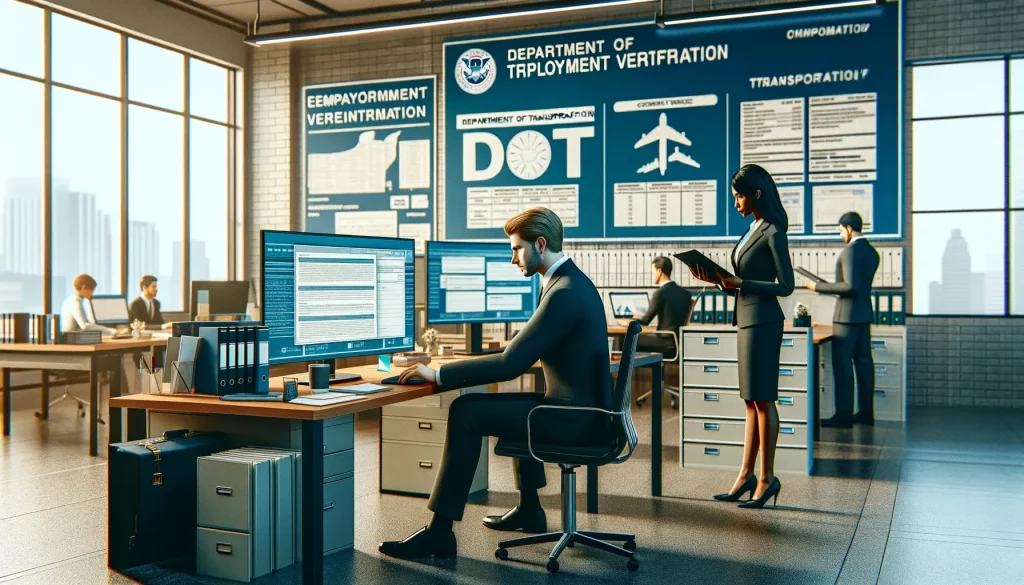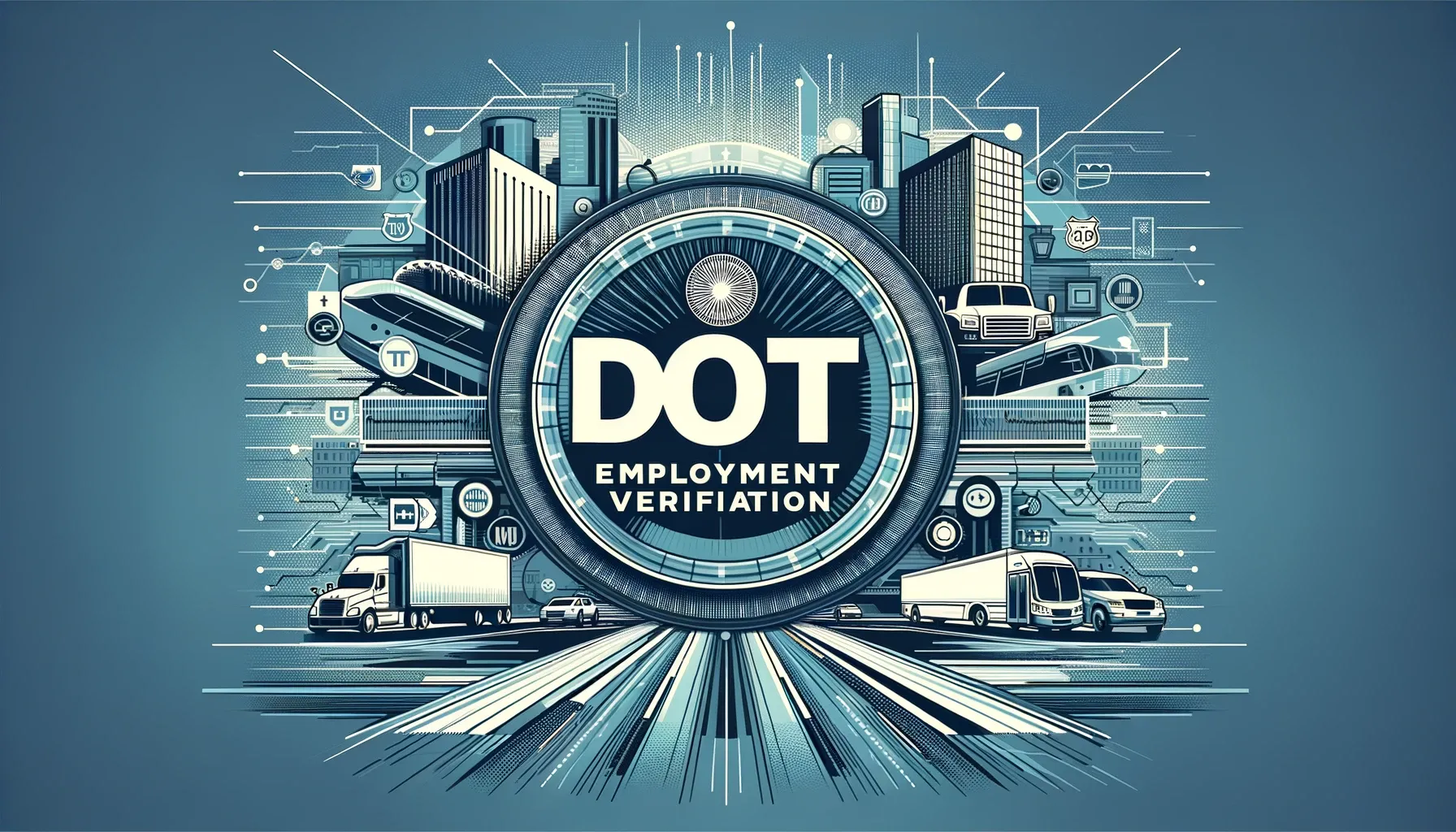Table of Contents
A thorough DOT employment verification is mandatory if you’re looking to hire truck drivers. It involves contacting previous employers following strict DOT guidelines to verify information such as job title, date of hire, and reasons for leaving.
A DOT-compliant background check is the first step to safe hiring decisions that shield your business from costly legal fees. Other required checks include drug tests and physical exams for drivers with diabetes mellitus or missing limbs.
Background Checks
Background checks are a crucial part of any hiring process. They reveal important information about a candidate’s past, such as criminal records at the county, state, and federal levels and any civil or criminal pending charges. A DOT employment verification check examines a driver’s Motor Vehicle Record (MVR) from every state where they hold a license. This can uncover driving-related felony or misdemeanor convictions, traffic violations, and driver’s license suspensions and restrictions.
Because trucking accidents are so deadly, DOT regulations require more extensive background screenings for commercial vehicle employees. These checks can help you avoid safety problems and protect your business from expensive lawsuits. Peopletrail offers comprehensive, industry-specific DOT employment verifications that allow you to discover potential risks quickly and efficiently.
Before a driver can take the wheel, they must pass a medical exam. A certified medical examiner must perform these exams to ensure that the driver doesn’t suffer from any serious health conditions that could keep them safely on the road for extended periods. Depending on the nature of the position, you may also need to perform additional health screenings like hepatitis and vaccination tests. This is particularly important if the job involves boarding passengers or children.

Drug Tests
The Department of Transportation has some regulations regarding drug tests for employees. The most important one, 49 CFR Part 40, describes the requirements for testing for safety-sensitive transportation employees. This includes what specimens are collected, who does the testing, what methods are used to test for drugs and alcohol, how an employer must handle a positive or refusal to test result, and what the mandatory return-to-duty procedures are after an employee has violated DOT drug or alcohol rules.
Urine is the most common test for drugs and alcohol, but there are other options as well. For example, presumptive substance tests are designed to identify suspicious substances, materials, or surfaces by a chemical reaction with traces of certain drugs. These tests are often conducted in conjunction with a visual or breath test.
Whether you use urine or another method of testing, you should have a written program that clearly explains your company’s DOT drug and alcohol policies. It should also include a designated key person in charge of all drug and alcohol policy functions. This is called the Designated Employer Representative, or DER.
You must also have a random drug testing program separate from your non-DOT drug and alcohol screening program. DOT recommends that you test your employees at least quarterly, but larger companies may choose to test more frequently.

Physical Exams
People working in safety-sensitive industries – such as commercial drivers or those handling hazardous materials – must undergo regular DOT physicals to ensure they’re healthy enough to work safely. DOT physicals follow strict guidelines mandated by the FMCSA and are only conducted by certified medical examiners.
These assessments can encompass trying out for imaginative prescient and hearing, checking blood stress and pulse charge, and finishing a urinalysis to test for underlying situations like diabetes and kidney disorder. They can also take a look at the extremities for any loss of function or atrophy, which is critical to bear in mind if riding is part of a job.
It’s no secret that commercial vehicle accidents can have catastrophic consequences, leading to injuries and, in some cases, death. That’s why drivers must be physically and mentally fit to handle the rigor of this type of work.
Candidates nervous about their upcoming physical exam must prepare by refraining from caffeine and nicotine and wearing/bringing any glasses or hearing aids they need. Reviewing the DOT physical forms beforehand is helpful so they know what to expect.

Medical Exams – DOT Employment Verification
As a trucking company, you must ensure your drivers are healthy and capable of driving your trucks. The DOT employment verification process includes medical exams to check for certain health conditions and drug abuse problems that can be fatal to your drivers while they’re on the job. It also involves queries of the FMCSA’s drug and alcohol clearinghouse to ensure that your potential employees don’t have a history of using controlled substances or drinking and driving while they’re on the road.
A DOT physical is not the same as a normal medical exam and requires specific documentation from your candidate’s doctor. The doctor examines your applicant for health issues that could interfere with driving a commercial vehicle, such as poor vision, sleep apnea, high blood pressure, and heart conditions. The exam also requires chest X-rays to check for respiratory disease and TB tests to mitigate the spread of infectious diseases like tuberculosis that can be transmitted through the air.
Conducting a DOT background check takes time and effort, but it’s essential to the success of your business. Using an expert service to perform these checks can save you valuable time while ensuring compliance with DOT regulations. You can also trust these companies to handle your sensitive and confidential records properly. They can quickly and accurately verify applicants’ information while following strict privacy laws to protect your business.




